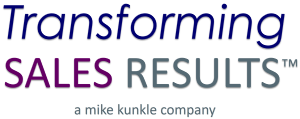The More Things Change, The More They Stay The Same
Recently, I heard from a social media networking contact who has been away from sales enablement for awhile but is heading back into the field. He asked if I might suggest a few programs, approaches and resources to review. His goal was to catch up on “more current thinking and approaches to developing a sales force” as he “was sure things have evolved” over the past 10 years. Smart question.
I’m usually not short of opinions and advice, but I struggled on this one. I guess that’s because, as a confirmed luddite, I don’t really think things have changed that much. In the end, I think he felt let down by my response, or perhaps insulted. I felt a little bad about that, because I could have said a lot of different things. I’m not (completely) blind or deaf and am fairly well read. I had a lot of academic replies on the tip of my tongue that would have made an OD professor proud. But that wouldn’t have been me, or true.
I Saw That! You Rolled Your Eyes…
Yeah, okay. Sure. The economy is tough. Recessions suck. Budgets are tight. Cold calling no longer works (note: something I hear; not necessarily believe). Sales is getting tougher. Social media and the information explosion we call the Internet have both blasted into the picture. And now, we have amazing mobile technology. Surely the entire game has changed! Right!?
Errr… not so much.
Ch-ch-ch-changes
Yes, circumstances, culture, generations, tools and technology have evolved. But in my opinion, these are just the surrounding circumstances. People are generally the same. Organization behavioral is basically the same. Change management challenges are the same. Customers still want to pay less than we charge and get a great deal. Sales people are still wired the same way. And in every company with a chance for survival, something is working, which means someone has figured out the magic sauce there… “And that,” he said (as a hush fell over the crowd), “can be replicated.”
It’s the Process, Stupid… Not the Economy (with apologies to Bill Clinton)
So, as much as a few of my friends tell me otherwise, I believe the basic organization effectiveness work remains the same. Sometimes, I think that people who clamor so fervently about major changes are just trying to sell you their latest fad idea, to deal with all those “changes.” But you didn’t hear that here.
I stick to, and get the best results from, the core basics. Blocking and tackling. In the sales enablement arena, most practitioners just don’t research well enough, or execute well enough. And then they blame the changes and “how tough it is…. out there” when they don’t deliver real results.
Give Me A Lever And A Place To Stand, And I’ll Move The World
The work I do is summarized here and elsewhere on this blog (like here). I’ve evolved the methods and techniques over the years, but it’s the same core stuff.
In short:
- Fix hiring. It’s almost always broken. Consider psychometric assessments combined with behavioral interviewing or Topgrading. (See this post for more on assessments).
- Fix training. It’s almost always broken. Figure out the sales performance levers, and build training systems (not events) around the success factors for the frontline sales role, using best practices from top producers. Orchestrate transfer systems to get training from the classroom or course into the real world.
- Fix coaching. It’s almost always broken. Ensure that management deeply understands the levers, training content, how to use both reporting and dialogue to diagnose problems with the levers, and how to coach to fix them. (Heavy emphasis on coaching right, after hiring right.)
- Fix compensation. It’s almost always broken. Ensure compensation makes sense and drives and rewards the right behaviors.
- Fix lever alignment. It’s almost always broken. Improve or massage sales processes, policies, procedures and practices, or even customer service or products, to support the levers, and what top producers say they need to blow things out of the water. (Yes, you need to balance against the needs of the business, but for the most part, your top 20% and top 4% will get that… and want that… they want to stay employed, too).
How Now, Chick-fil-A Cow
Oversimplified? Well, yes. The magic is in how it’s done…
- How the performer analysis is conducted
- How the levers are indentified
- How the best practices research is conducted
- How that resulting knowledge is turned into learning and performance support systems
- How comp gets fixed
- How you get the organization aligned around radical performance improvement
Simple? Yes. Easy? Err… well, if it were, everybody would be doing it. And they’re not. But that doesn’t mean it’s changed. Sound the alarm.
Circumstantial Evidence
So, quit complaining about how much has changed, consider those things the “surrounding circumstances,” determine your levers, success factors and best practices, and do the hard work. That’s a lot less fun for some people than yelling about change, but it sure gets better results.
Me? I love it. How ’bout you? Feel the same? Think differently? Either way, let me know.
Be safe out there.
Mike
____________________________________
Mike Kunkle
Contact me:
mike_kunkle at mindspring dot-com
214.494.9950 Google Voice
Connect with me:
http://www.linkedin.com/in/mikekunkle
http://twitter.com/mike_kunkle

